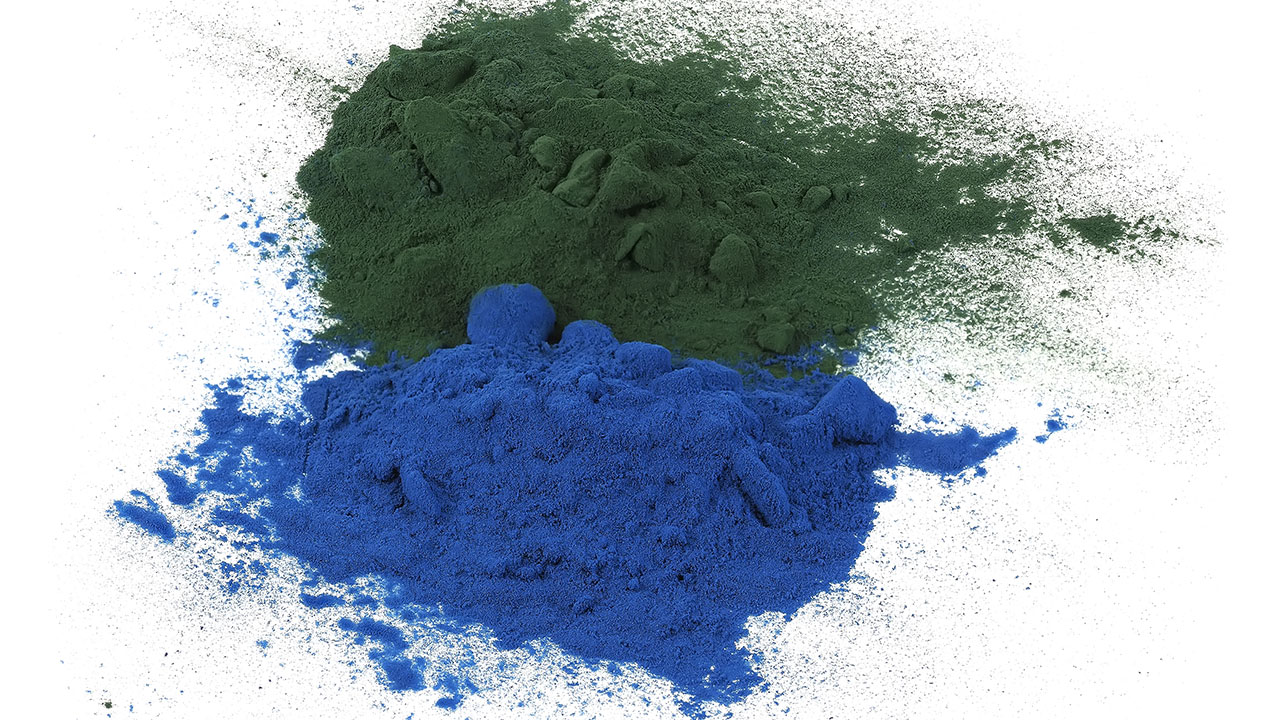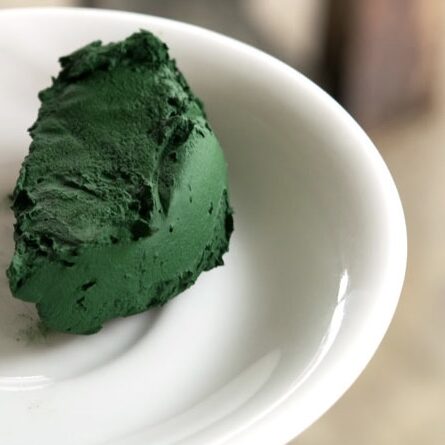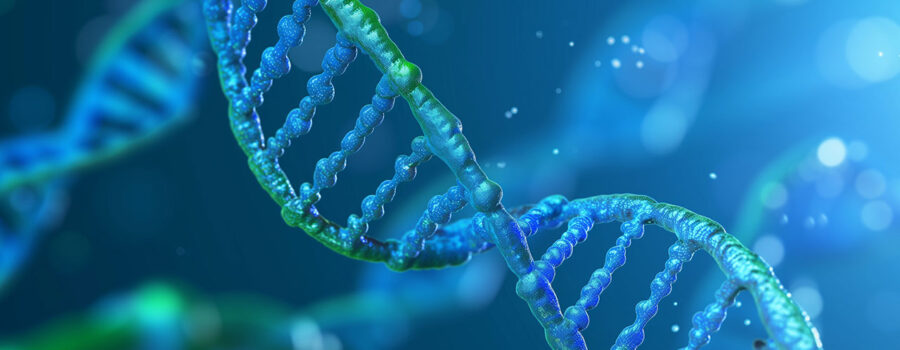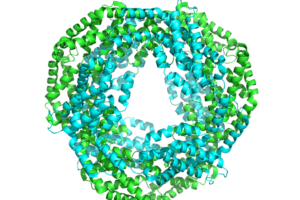The Power of Phycocyanin in Spirulina
Spirulina, a type of blue-green algae, is renowned for its high nutrient content and numerous health benefits. One of the most potent components of spirulina is phycocyanin, a phytonutrient that gives spirulina its distinctive blue color and boasts powerful antioxidant and anti-inflammatory properties. Phycocyanin has been linked to various health benefits, including reducing oxidative stress, lowering cholesterol levels, and anti-cancer properties.
“Blue Magic” or Blue Spirulina is an isolate powder product created by pre-extracting phycocyanin from whole fresh Spirulina. Blue Spirulina does not exist in nature.

The process of isolating phycocyanin from Spirulina involves several steps that can compromise the quality of the final product. This extraction process may introduce various fillers, preservatives, and additives. These substances dilute the purity of phycocyanin and include compounds that do not contribute positively to human health.
- Extraction Techniques: The methods used to isolate phycocyanin often involve chemical solvents or high temperatures, which can degrade some of the pigment’s beneficial properties.
- Additives and Preservatives: To enhance shelf life or improve texture, manufacturers might add synthetic ingredients that could pose health risks when consumed over extended periods.
- Health Considerations: Regularly consuming products containing these additives raises concerns about potential long-term health effects. Isolated phycocyanin does not provide the same comprehensive nutritional profile as fresh whole Spirulina.
Pre-Extraction of Phycocyanin
However, it’s important to note that during the processing of spirulina into powder form, phycocyanin is often pre-extracted. This means that the most potent phytonutrient in spirulina is removed before it reaches consumers in its powdered form. The extraction process involves isolating phycocyanin from the raw algae to be used separately in supplements like “Blue Magic” or other products, maximizing revenue streams.
Impact on Health Benefits
As a result of this pre-extraction process, the powerful health benefits associated with phycocyanin are no longer viable in the dead powder residue form of spirulina. Therefore, consumers seeking the specific advantages of phycocyanin should look for Fresh Spirulina, where this phytonutrient is retained in its completely natural form.
Extraction Methods:
- Physical Destruction:
- This method involves successive cycles of freezing and thawing. The formation of ice crystals during freezing ruptures the cell membranes, releasing intracellular phycocyanin.
- Fluid Extraction:
- This method uses supercritical carbon dioxide (CO2) as a solvent. The supercritical state of CO2 allows it to penetrate cell walls and extract phycocyanin efficiently.
- Alternating Electric Fields:
- Alternating electric fields disrupt cell walls quickly due to cavitation effects, which facilitate the release of phycocyanin.
- Ultrasonic Extraction:
- Ultrasonic waves create mechanical vibrations that break down cell walls, aiding in the release of phycocyanin from within the cells.
Stability and Sensitivity to Temperature Changes:
- Freezing:
- Freezing helps preserve phycocyanin by preventing enzymatic degradation and microbial growth. However, repeated freeze-thaw cycles can lead to protein denaturation.
- Room Temperature Stability:
- Phycocyanin remains relatively stable at room temperature but may degrade over time due to exposure to light and oxygen.
- High Temperatures:
- High temperatures significantly denature phycocyanin. Studies indicate that temperatures above 60°C lead to a rapid decline in its antioxidant, anti-inflammatory, and immunomodulatory activities due to structural changes in the protein complex.
Effects of Denaturation on Phycocyanin:
- Denaturation:
- Denaturation causes the unfolding of the protein structure, leading to a loss of functional sites necessary for its antioxidant activity.
- Aggregation:
- Denatured proteins tend to aggregate, which diminishes their solubility and bioavailability.
- Degradation:
- Prolonged heat exposure results in the breakdown of peptide bonds within the protein structure, further reducing its functionality.
Top 3 Authoritative Sources Used in Answering this Question
- National Institutes of Health (NIH)
- The NIH provides comprehensive research on dietary supplements and their effects on human health. Their resources include peer-reviewed studies on various components found in supplements like Spirulina.
- World Health Organization (WHO)
- WHO offers guidelines on food safety standards and the impact of food additives on health. Their publications help us understand the implications of consuming products with preservatives and fillers.
- Journal of Applied Phycology
- This scientific journal publishes research specifically focused on algae-based products like Spirulina and their extracts. It provides detailed insights into the extraction processes and potential health impacts.
Phycocyanin in Fresh Spirulina
Phycocyanin Content: Fresh spirulina contains higher phycocyanin levels than powdered spirulina. Phycocyanin is a potent antioxidant and anti-inflammatory compound that contributes significantly to the health benefits of spirulina.
Bioavailability: The nutrients in fresh spirulina, including phycocyanin, are more bioavailable, meaning they are more easily absorbed and utilized by the body. This can enhance the effectiveness of its health benefits.

Gourmet Fresh Spirulina
Antioxidant Properties
Superior Antioxidant Activity: Phycocyanin in fresh spirulina retains its full antioxidant capacity, which helps combat oxidative stress more effectively than powdered forms. Oxidative stress is linked to various chronic diseases, so reducing it can have significant health benefits.
Immune System Support
Enhanced Immunostimulant Qualities: Fresh spirulina’s phycocyanin has stronger immunostimulant properties, helping to boost the immune system more effectively. This can aid in better overall health and resistance to infections.
Detoxification
Detoxifying Abilities: The detoxifying qualities of phycocyanin are more pronounced in fresh spirulina. This helps eliminate toxins from the body more efficiently, promoting better liver function and overall detoxification processes.
In summary, the health benefits of phycocyanin from fresh spirulina are far superior to those of powdered spirulina due to its higher nutrient content, better bioavailability, stronger antioxidant activity, enhanced immune support, and superior detoxifying abilities.
- BMC Chemistry
- A peer-reviewed journal providing comprehensive research articles on chemical processes, including those related to natural pigments like phycocyanin.
- Journal of Applied Phycology
- An authoritative source focuses on applied research on algae and cyanobacteria, including extraction methods for valuable compounds like phycocyanin.
- Food Chemistry Journal
- A well-regarded journal that publishes studies on food science, including stability analysis and extraction techniques for food additives such as natural colorants like phycocyanin.




Recent Comments